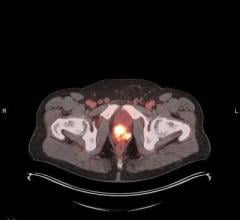June 24, 2016 — Developers of a new portable molecular imaging system debuted their creation at the 2016 Annual Meeting of the Society of Nuclear Medicine and Molecular Imaging (SNMMI), June 11-15 in San Diego. The new system combines optical imaging at the surface level and scintigraphy, which captures the physiological function of what lies beneath.
The scintigraphy aspect of the scanner is comprised of a gamma camera that detects tiny radioactive signals emitted from the body after injection of a radionuclide, which interacts with specific physiological functions of the body, so that nuclear medicine physicians and their colleagues can extrapolate information from the radionuclide’s activity.
Optical-gamma imaging could provide a multi-dimensional look at the body by allowing physicians to see a visual representation of molecular data in the same frame as optical images of the skin, the eyes and other surface organs. Unlike most hybrid imaging systems, which typically take up a lot of real estate in healthcare facilities, this technology is small enough to be easily portable.
“This research covers the first patient results obtained with the hybrid optical-gamma camera developed in the U.K. at the Universities of Leicester and Nottingham,” said Alan Perkins, Ph.D., radiological sciences, University of Nottingham, Nottingham, United Kingdom. “This scanner has hand-held potential and can be used in a variety of settings, including the outpatient clinic, patient bedside, operating theatre and intensive care unit.”
For this clinical pilot study, researchers imaged subjects undergoing routine molecular imaging procedures such as bone scans or imaging of the thyroid, eye or lymphatic system. The investigators optimized the image resolution and acquisition time to under five minutes by adopting a 1.5 millimeter-thick scintillator, which picks up gamma rays as they are emitted from within the body, and a 1 millimeter pin-hole collimator, which acts like an aperture to narrow focus on a particular field of view.
Results of the study showed that the optical-gamma camera was highly effective for imaging lymphatic and thyroid tissue, as well as drainage from the tear ducts, or lacrimal glands. Successful absorption of the radionuclides in these targeted areas was clearly seen in tandem with optical images of surface anatomy. This imaging system is still in development and requires further investigation before being made available to wider patient populations.
For more information: www.snmmi.org


 May 21, 2024
May 21, 2024 








